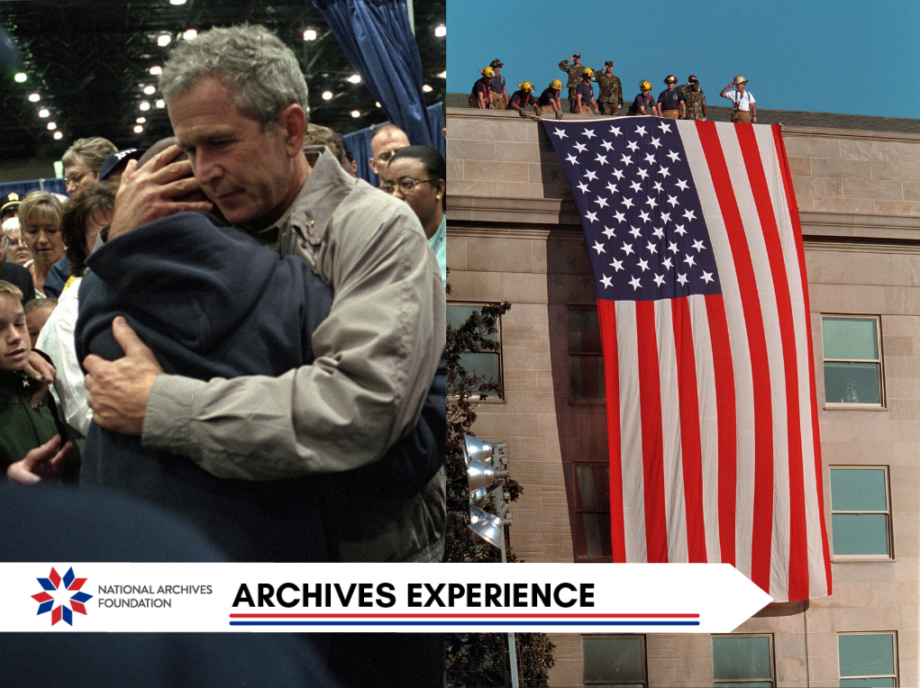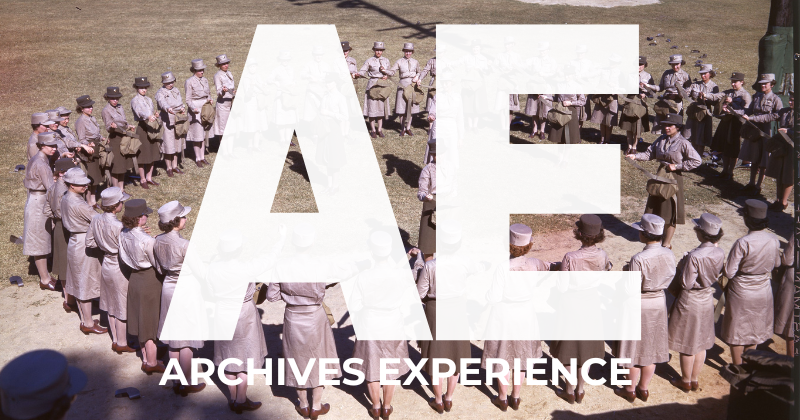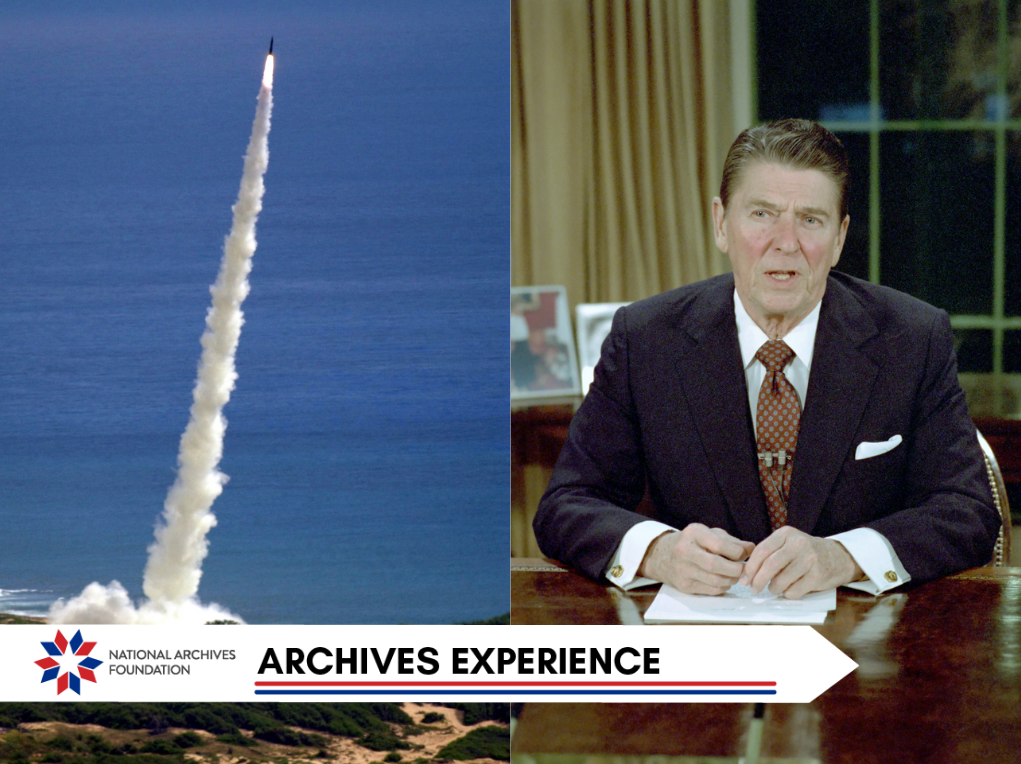Happy Anniversary, Air Force!
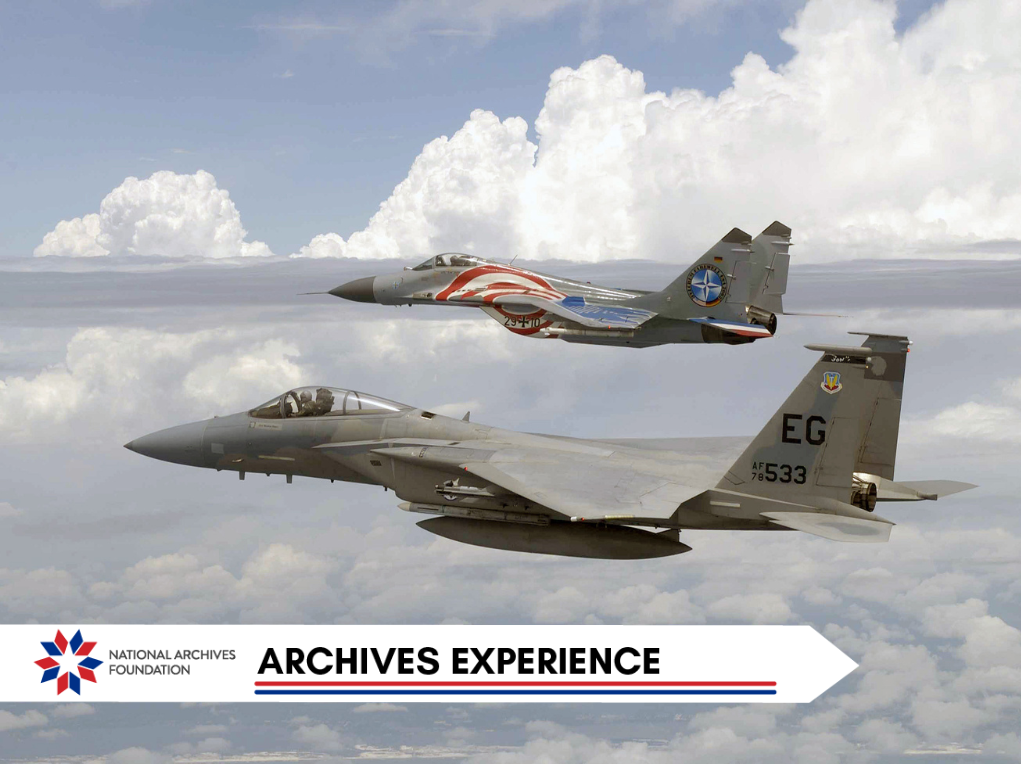
September 24, 2024
Last week, the U.S. Air Force celebrated its 77th anniversary. Established on September 18, 1947, the Air Force was created under the National Security Act of 1947. Still, this wasn’t the first time the United States military had taken flight.

Air Force Captain Morris Fontenot, an F-15C Eagle pilot with the 58th Fighter Squadron, 33rd Fighter Wing at Eglin Air Force Base, flies with a German Captain above Florida. (U.S. National Archives’ Local Identifier: 6646351)
Military Aviation Takes Off
Aviation in the U.S. military traces its origins back to the American Civil War, when both the Union and Confederate armies used balloons filled with hydrogen to direct artillery fire. The U.S. Army also leveraged balloons during the Spanish-American War and World War I, before “flying machines” took to the skies. Then, in 1907, the U.S. Army Signal Corps established a small aeronautical division and began testing its first airplane in 1908. With the help of the Wright brothers, an improved Wright Flyer called “Airplane No. 1” was formally accepted by the Signal Corps a year later. By 1912, Congress began appropriating funds for Army aeronautics, and by 1914, it approved the creation of an Aviation Section to replace the Aeronautical Division.

The Wright Brothers arrive with a Flyer aboard a wagon in Fort Myer, VA, in 1908 (U.S. National Archives’ Local Identifier: 6641475)
After the United States entered World War I in 1917, President Woodrow Wilson issued an executive order transferring aviation from the Signal Corps to two agencies under the Secretary of War, recognized as the Army Air Service. Despite a short combat record of only nine months, the Air Service made an impressive showing and grew from a fleet of a few dozen to over 11,000 planes by the war’s end.
Before World War II, the Air Service became the Army Air Corps in 1926 under General George C. Marshall and then merged with other Army air elements to become the Army Air Forces in 1941. Throughout the war, the Army Air Forces grew to become a major military organization with numerous air forces, commands, divisions, squadrons, and more, prompting the creation of a separate military branch in 1947: the Air Force.
From Military Necessities to Fashion Staples
Since these early beginnings, the Air Force and its predecessors have established a reputation for technology and innovation. From the Global Positioning System (GPS) and pressurized air cabins to drones and aviator sunglasses, the Air Force has optimized several technologies we now use.
While the origins of GPS can be traced to several programs across three military branches, the Air Force was assigned to take control of a combined program and develop a three-dimensional system that could track latitude, longitude, and altitude in real time. The combined Navstar GPS program began in 1973; however, the technology didn’t reach full operational capacity until 1995. Now, GPS is an irrevocable part of our society, enabling everything from military operations to synchronized bank transactions, everyday car navigation, tracking package deliveries, smartphone interactions, and more.
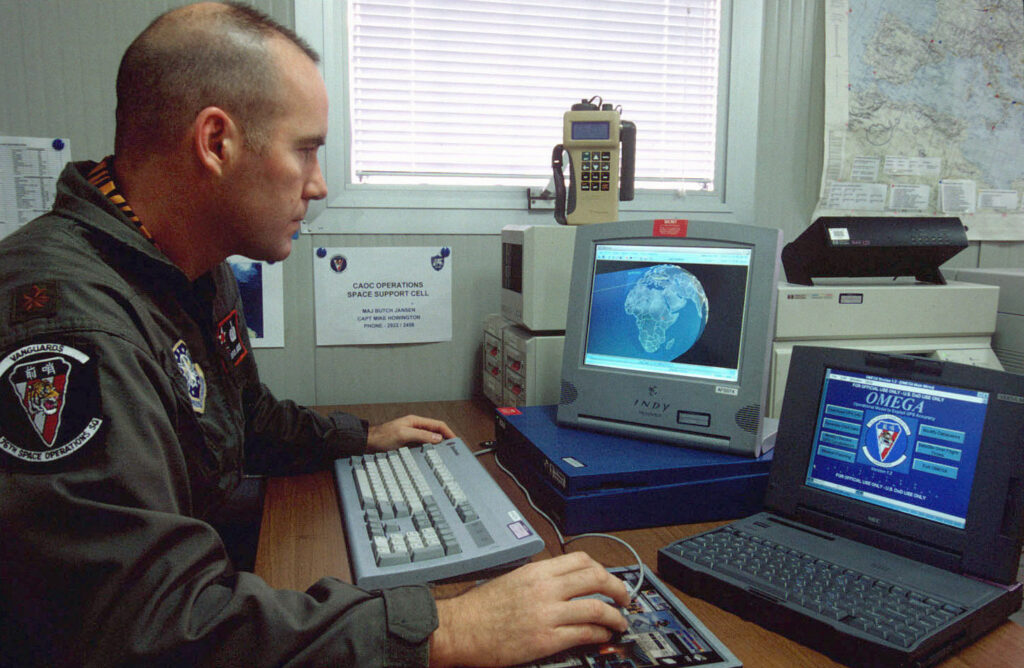
U.S. Air Force Major Butch Jensen demonstrates the use of GPS to track Air Tasking Message (ATM) transactions in 1996. (U.S. National Archives’ Local Identifier: 6516267)
Created by the Army Air Corps—a predecessor of the Air Force—aviator sunglasses have been transformed from military necessity to fashion staple. Prompted by the idea of Colonel John Macready, optical company Bausch & Lomb created the first pair of aviator sunglasses to improve pilots’ visibility at high altitudes. Trademarked as “Ray Bans” in 1936, aviator sunglasses rose to popularity when photos of General Douglas MacArthur wearing them were published in newspapers in 1944 (see one example below). In 1958, the Air Force approved a new design (Type HGU-4/P) with a more comfortable library temple, making the sunglasses easier to put on and take off when pilots were wearing helmets and headsets. Since then, aviators have gained traction among pilots, presidents, and celebrities as accessories that never go out of style.

General MacArthur wears aviator sunglasses on Leyte Island in the Phillippines in 1944. (U.S. National Archives’ Local Identifier: 513210)
The Air Force just turned 76, but next year, the U.S. Army, Navy, and Marines will commemorate the military’s 250th anniversary. For more updates on how you can celebrate this occasion at the National Archives and honor the active-duty military personnel and veterans in your life, continue following the Archives Experience.

The USAF Academy Band Marches in President Richard M. Nixon's inaugural parade in Washington D.C., 1969. (U.S. National Archives’ Local Identifier: 218517932)
Related Content
